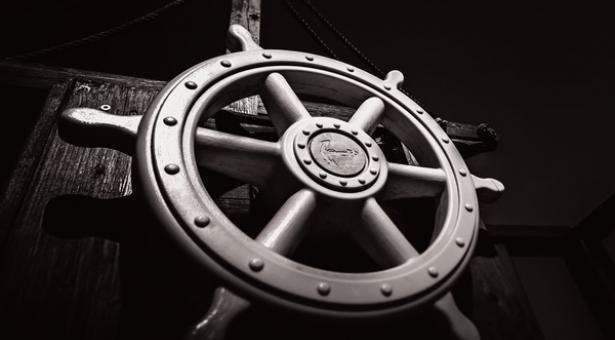

Command Syntax: Impulse Navigation

The main navigation mode for moving around star systems is impulse, which involves speeds of up to one-fifth the speed of light (about 60,000KM per second).
This article outlines the syntax used for conveying commands related to impulse navigation.
Propulsion
Accelerating the ship forward using engine output (or thrust) is described as drive mode while travelling forward at the same speed (using the vessel’s inertia rather than engine output) is described as cruise mode.
An command to change the vessel’s speed has two parts: the target speed and the level of thrust that should be applied to achieve that speed. The more thrust, the faster the speed is reached, but the higher the EM output.
For example: “Make your speed half-impulse, ahead standard”
This tells the quartermaster to target a speed of 0.1C and apply 60% thrust.
Describing Speed
Speed can be described numerically, for example “point one five C” for a speed of 0.15C.
Shorthand terms are also used to describe certain common or useful speeds:
|
Term |
Speed |
|---|---|
|
All stop |
No movement |
|
Dead Slow |
0.01C |
|
Slow |
0.025C |
|
Quarter impulse |
0.05C |
|
Half impulse |
0.1C |
|
Three-quarter impulse |
0.15C |
|
Full impulse |
0.18C |
|
Maximum Impulse |
0.2C |
Describing Thrust
The direction of thrust must be specified. Ahead applies thrust to move the vessel forward. Astern applies thrust to slow the vessel or move it backward.
The level of thrust is then specified. This can be numerical - for example “sixty five percent” for 65% thrust.
Shorthand terms are also used to describe common or useful thrust levels:
|
Term |
Thrust |
|---|---|
|
Standard by quarter |
40% |
|
Standard by half |
50% |
|
Standard |
60% |
|
Standard by two |
70% |
|
Flank |
80% |
|
Emergency |
90% |
|
Maximum |
100% |
Partial Commands
Where the conn issues a command with only one parameter included the quartermaster should avoid seeking immediate clarification and use their discretion instead, ensuring they communicate their decisions back to the conn.
For example, if a command includes only the thrust parameter eg "ahead standard", don't include a target speed in your callback, but announce to the conn when the vessel reaches each speed miletone eg "speed is now half impulse".
If a command includes only the speed paratemeter eg "make your speed half impulse", then choose an appropriate level of thrust (typically standard but context may suggest otherwise) and include it in your call back eg "speed half impulse, ahead standard".
Maneuvering
The Conn is unlikely to convey maneuvering orders in numerical terms - for example "make your bearing zero-three-zero" for a 30° turn to port - unless they have a very specific requirement in mind.
Instead, only the intended outcome would be conveyed with the specifics of the maneuver to achieve that outcome left up to the quartermaster.
Below are phrases which convey common maneuvering requirements, often derived or adapted from nautical terminology.
Describing Direction
|
Term |
Example |
Bearing/Action |
|---|---|---|
|
Reverse course/heading |
"Reverse course" |
Execute a 180° heading change (via a held bearing) |
|
Evasive |
"Evasive port" "Evasive action" |
Execute the largest bearing or vector possible in the direction indicated, applying emergnecy thrust. If the direction (port/starboard/dorsal/ventral) is not specified in the command then quartermaster's discretion. |
|
Hard |
"Hard to port" |
Execute the largest bearing possible in the direction indicated and hold the bearing until ordered to disengage or a 90° change from the original heading has been made (whichever occurs first). |
|
Ease |
"Ease to port" |
Execute a small 5° bearing in the direction indicated and hold the bearing until ordered to disengage or a 30° change from the original heading has been made (whichever occurs first). |
|
Bring |
"Bring [the other vessel] to the starboard bow" "Bring us to [the other vessel's] starboard bow" |
Maneuver relative to another vessel to achieve the specified orientation (in the example, the other vessel would be off your starboard bow at the end of the maneuver). The orientation perspective can be reversed (as in the second example) |
|
Keep |
"Keep [the other vessel] on the starboard bow" "Keep our profile down" |
Maneuver relative to another vessel to maintain the current (specified) orientation. |








